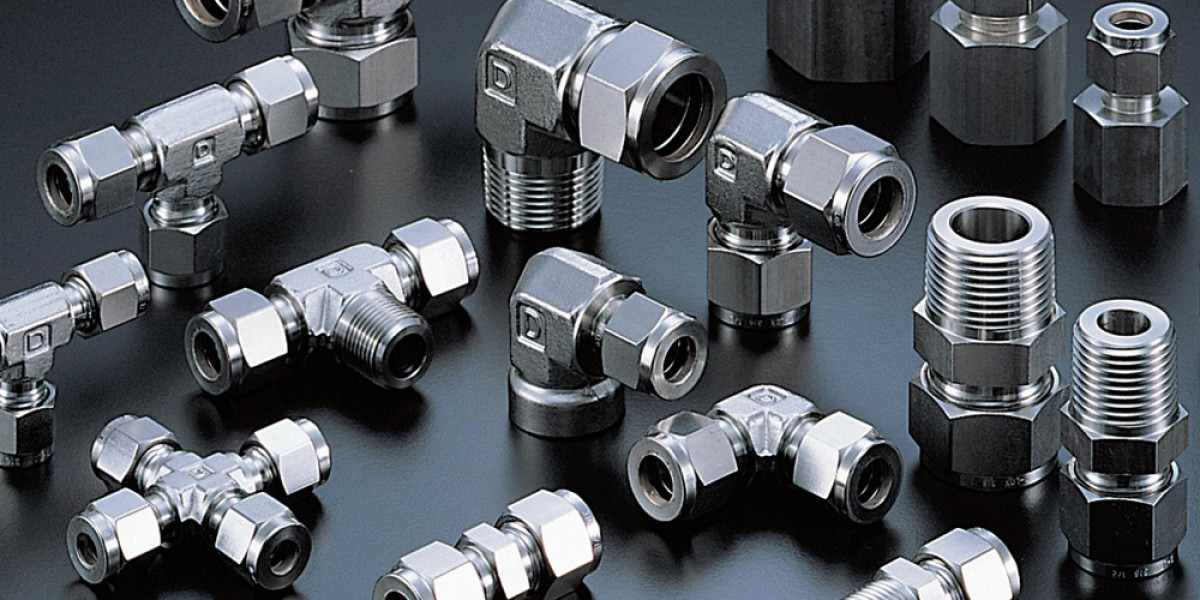Understanding Instrumentation Fittings and Their Industrial Importance
In industries where accuracy and safety are paramount, the smallest components often play the biggest roles. Instrumentation fittings are one such example. They may seem like minor parts, but these fittings ensure leak-free, durable, and precise connections in monitoring and control systems.
Whether it’s measuring fluid pressure in a refinery, controlling flow in a chemical plant, or monitoring systems in power generation, instrumentation fittings are at the heart of reliable operations. This guide explores their types, materials, benefits, and applications, helping you understand why choosing the right fittings is critical.
What Are Instrumentation Fittings?
Instrumentation fittings are precision-engineered components designed to connect tubing or piping to measuring devices, valves, and other equipment in an instrumentation system. Unlike regular pipe fittings, these fittings are designed with tight tolerances, precision sealing mechanisms, and enhanced corrosion resistance.
Their role is to ensure safe, leak-proof, and reliable connections in systems that operate under high pressure, extreme temperatures, or aggressive chemical conditions.
Types of Instrumentation Fittings
Instrumentation fittings come in various designs to suit different connection requirements. The most common categories include:
1. Tube Fittings
Tube fittings are widely used in instrumentation systems where accurate measurement and leak-free connections are crucial.
Compression fittings: Provide secure tube connections without welding.
Double ferrule fittings: Offer enhanced grip and sealing, making them reliable for high-pressure applications.
Swagelok-type fittings: Popular for critical systems in chemical and oil industries.
2. Pipe Fittings
Instrumentation pipe fittings are used for threaded or welded pipe systems. Types include:
Elbows
Tees
Reducers
Couplings
Crosses
3. Specialty Instrumentation Fittings
Adapters: Connect tubes and pipes of different sizes or materials.
Quick-connect couplings: Allow fast and easy installation or removal.
Manifold fittings: Enable multiple line connections in compact spaces.
4. Instrumentation Valves and Connectors
While not always categorized under fittings, valves and connectors form part of the broader instrumentation setup. They regulate pressure, flow, and direction of fluids within the system.
Materials for Instrumentation Fittings
The material of the fitting directly influences its durability and suitability for specific environments.
Stainless Steel (304, 316/316L): Best choice for corrosion resistance in marine, chemical, and oil industries.
Brass: Affordable and easy to machine, widely used in low-pressure applications.
Carbon Steel: Preferred for high-strength, high-pressure applications.
Special Alloys (Hastelloy, Inconel, Monel): Chosen for extreme chemical and thermal resistance.
PTFE-lined Fittings: Used when the system carries aggressive or reactive chemicals.
Key Features of Instrumentation Fittings
High precision and dimensional accuracy.
Leak-free sealing even in high-pressure conditions.
Resistance to corrosion and chemical attack.
Easy installation and reusability.
Compatibility with various tube and pipe sizes.
Reliability in vibration-prone or high-temperature environments.
Advantages of Using Instrumentation Fittings
Leak Prevention: Guarantees safe operations in critical industries.
Cost Efficiency: Reduces downtime and maintenance costs.
Safety Enhancement: Protects workers and equipment from leaks or failures.
Versatility: Available in various designs and materials to suit diverse applications.
Durability: Long-lasting even under harsh conditions.
Applications of Instrumentation Fittings
Instrumentation fittings are indispensable in industries where precision and reliability are non-negotiable.
Oil & Gas: Used in refining, drilling, and pipeline monitoring systems.
Chemical & Petrochemical: Resist corrosive fluids in reactors and process lines.
Pharmaceuticals: Provide sterile and contamination-free connections.
Food & Beverage: Ensure hygienic, safe, and leak-free operations.
Power Plants: Support monitoring in boilers, turbines, and control panels.
Marine & Offshore: Handle saltwater exposure and harsh offshore conditions.
Instrumentation Tube Fittings vs. Pipe Fittings
Though both serve as connectors, they differ in design and applications:
Tube Fittings: Use compression or ferrule sealing, ideal for accurate measurements and leak-proof operations.
Pipe Fittings: Depend on threads or welding, making them robust for high-strength connections.
The choice depends on the system’s requirements—precision and flexibility for tubing, strength and durability for piping.
Factors to Consider When Choosing Instrumentation Fittings
Selecting the correct fitting ensures efficiency and safety. Consider:
Material compatibility with fluids and operating environment.
Operating pressure and temperature ratings.
Size and dimensional accuracy matching tubes/pipes.
Type of connection (compression, threaded, or welded).
Compliance with standards like ASTM, ASME, or ISO.
Installation and Maintenance Tips
Even high-quality fittings require proper handling:
Ensure tubes are clean, smooth, and burr-free before installation.
Tighten fittings according to manufacturer’s torque instructions.
Inspect connections periodically for corrosion, wear, or loosening.
Avoid overtightening to prevent damage to ferrules or threads.
Replace damaged or worn fittings promptly.
Why Work with a Trusted Instrumentation Fittings Manufacturer?
A reliable instrumentation fittings manufacturer and supplier in India provides:
Superior quality fittings with precise engineering.
Custom sizes and designs tailored to industrial needs.
Affordable pricing with timely global supply.
Compliance with international quality standards.
Technical support and assistance.
Choosing a trusted supplier reduces downtime, prevents leaks, and guarantees safety in critical applications.
Future of Instrumentation Fittings
As industries move toward digitalization and automation, instrumentation fittings are also evolving:
Development of smart fittings integrated with sensors for real-time monitoring.
Eco-friendly designs to support sustainability.
Use of advanced alloys for extreme conditions.
Compact fittings that save space in modern systems.
These innovations will further enhance reliability and performance across industries.
Conclusion
Instrumentation fittings may appear small, but their role is massive in ensuring accurate measurements, leak-proof systems, and safe operations. They serve as the backbone of monitoring and control systems in industries like oil & gas, chemical, pharmaceutical, and power generation.
By selecting the right fittings—based on material, pressure, and connection type—industries can achieve better efficiency, safety, and longevity of their systems. Partnering with a reliable instrumentation fittings manufacturer and supplier in India ensures quality, durability, and cost-effectiveness.
In short, instrumentation fittings are not just connectors; they are critical components that keep industries running smoothly.











